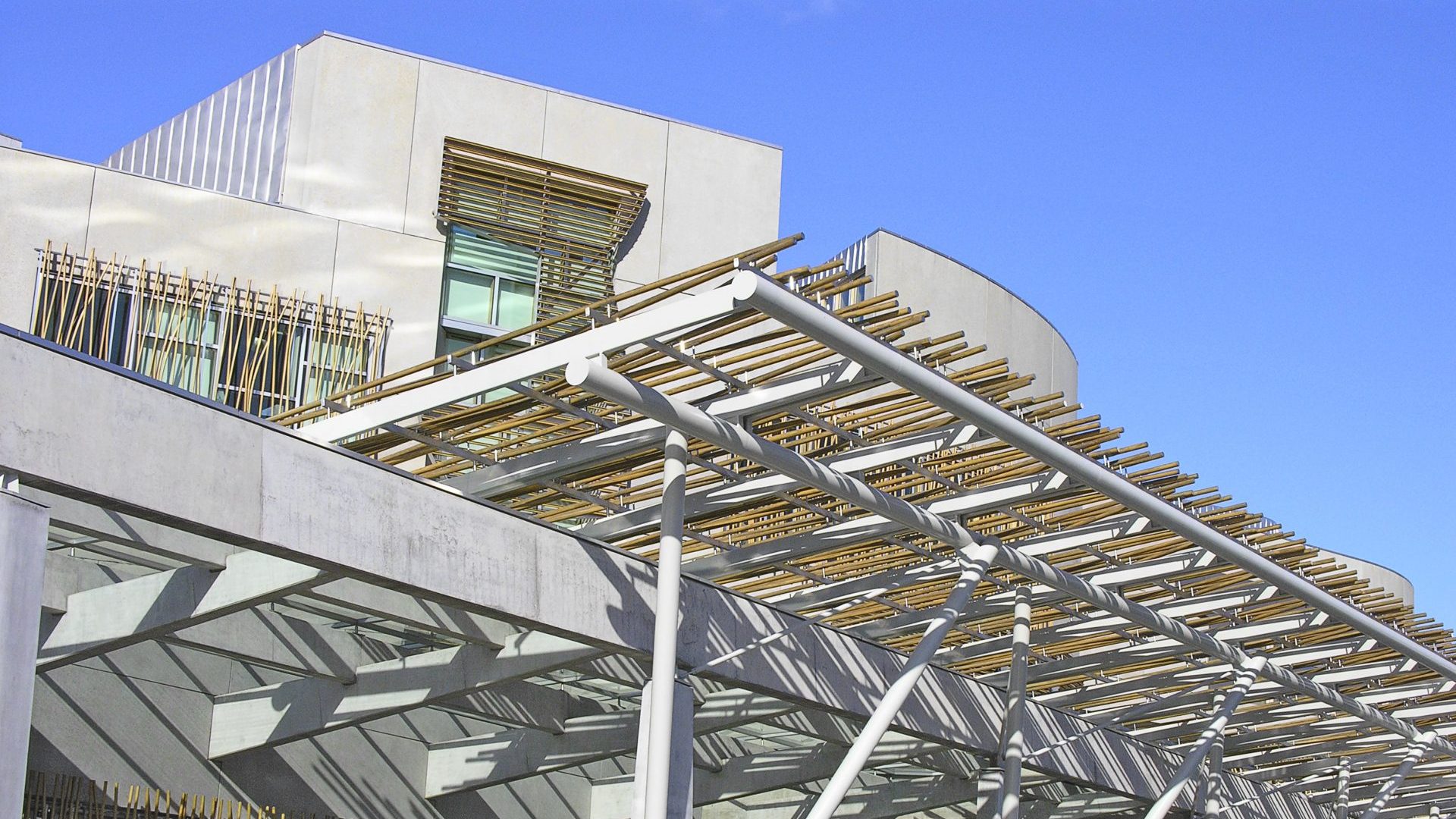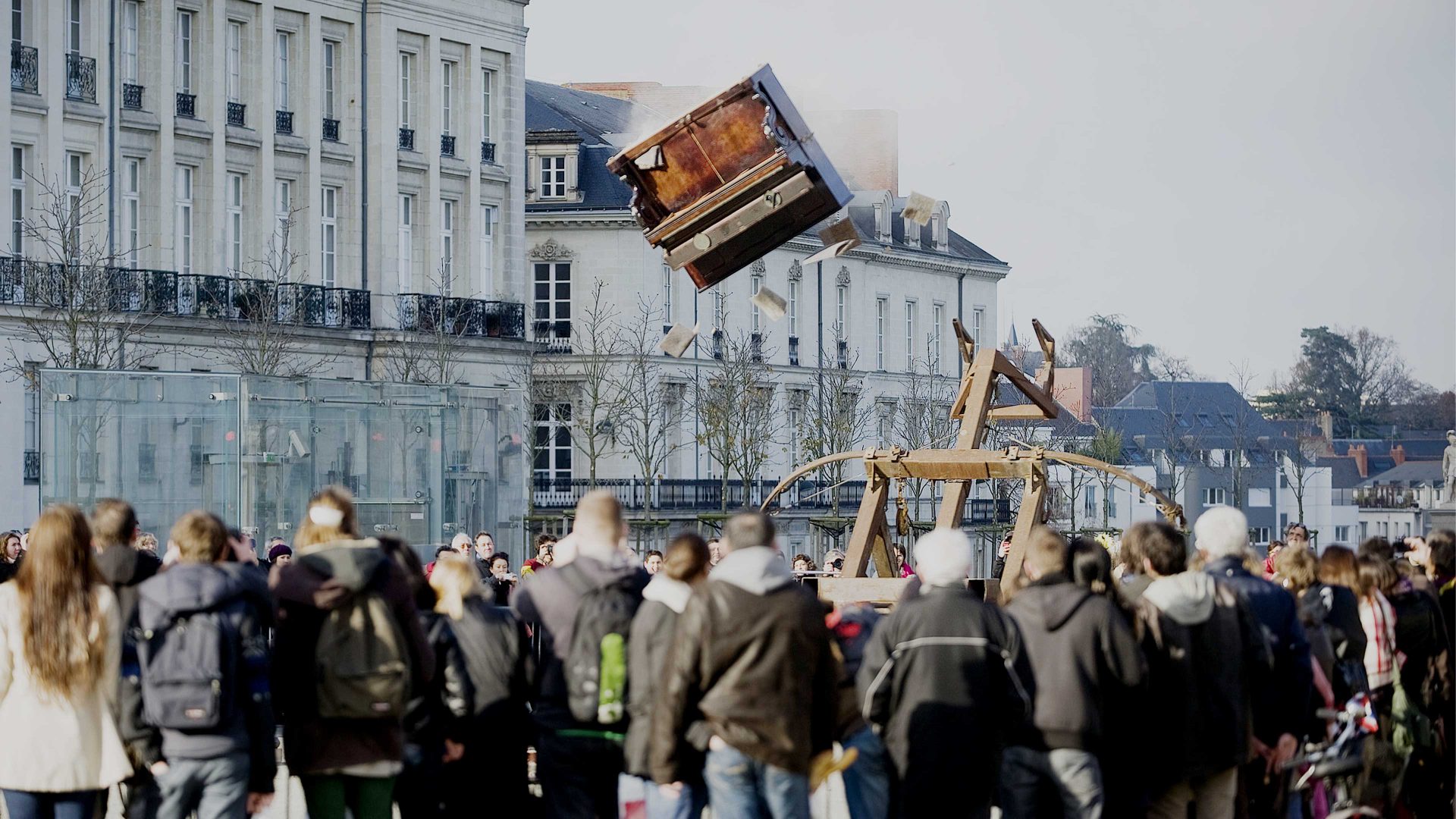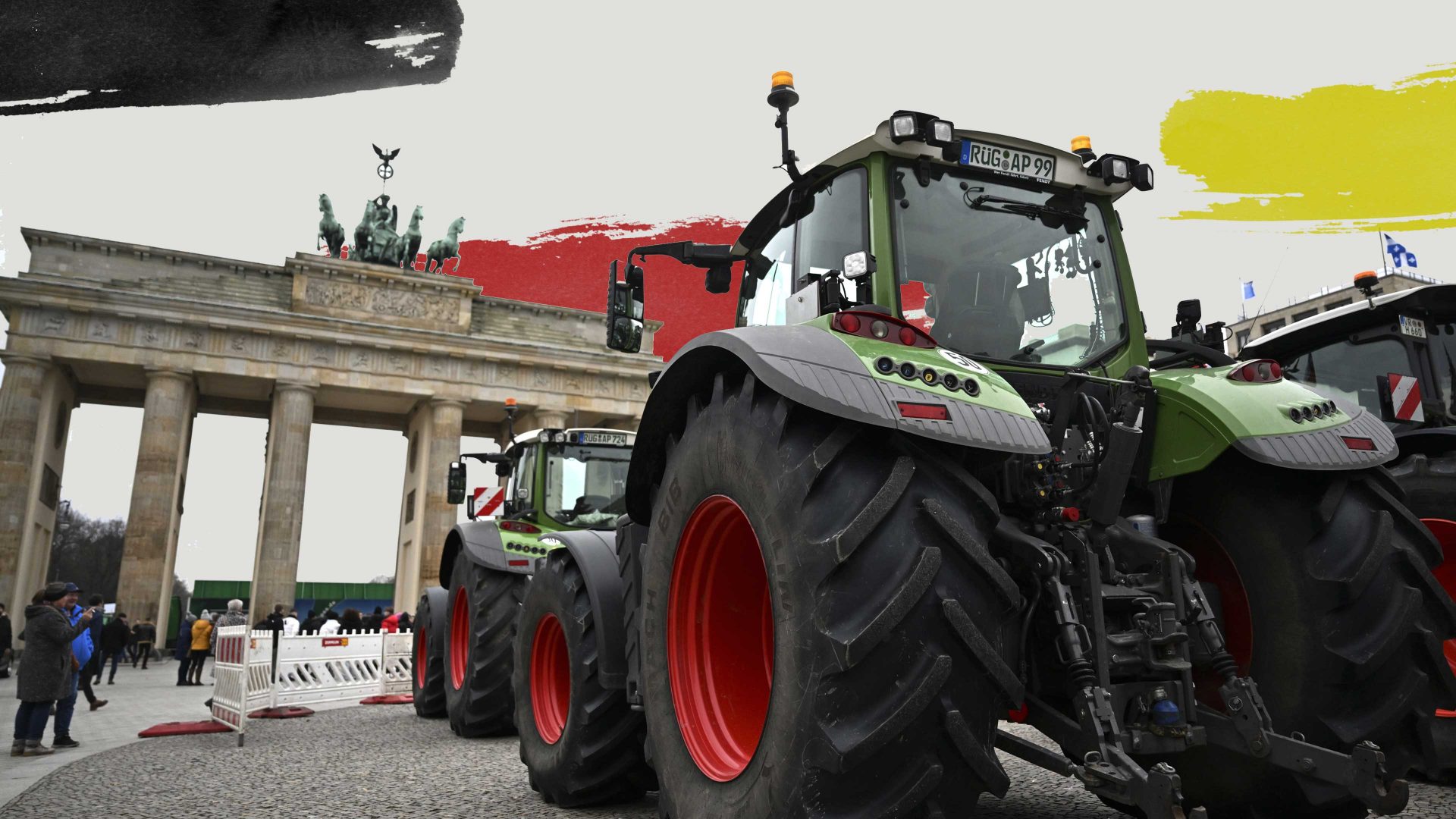There’s a specific style of building that graces the Royal Mile in Edinburgh. For the most part, old tenements tower over you, weathered by time. But progressing down the hill, formed a few million years ago by glaciers, and away from the castle and the fanfare of tourists, the street opens up and the buildings slouch down, fading into 1960s facades that have seen better days. Plonked at the end, opposite a palace that seems straight out of a fairytale, sits a concrete cruise ship. When I first passed it a few years ago, wide-eyed and new to the city, I thought it was a military base, or maybe a prison. Yet, ironically, behind the heavy concrete wall lies what is for many a bastion of hope and freedom – the Scottish Parliament.
After a few years of living in Scotland, I’ve finally got round to seeing it from the inside. It’s a clever, subtle interior. The doors bear delicate saltire panelling. Art installations reference Mary, Queen of Scots, who sacrificed herself for her country. This wasn’t designed as a halfway house.
Wandering down cold, stone halls, panelled with Scandinavian oak (because there wasn’t enough Scottish wood available), I can’t help but admire the determination of those who fought for devolution. Hanging on the wall outside the debating chamber is a portrait of Donald Dewar – who became first minister and campaigned for a Scottish parliament, but never lived to see it open. The chamber itself resembles the upturned hull of a boat, and for years now, the SNP has dominated this space.
Talking to Scottish friends, there is growing support for the Greens, who are committed to independence and also climate action. Even for friends in favour of the union, their climate policies are tempting and an appealing alternative to the SNP, tainted by embezzlement scandals and defections. “We’ve been let down by our politicians,” one friend explains to me.
When I ask about the future of the independence campaign, a lot of people feel it has become a stagnant issue. Amid a cost of living crisis and the loss of Nicola Sturgeon, momentum has been lost and passion has faded. “People want independence but, to be honest, they’re busy,” one friend says. A staunch nationalist, he’s lost faith in the SNP even though he believes independence is best for Scotland in the long run. He also suggests that Brexit has hit people’s passion: “If we were in Europe for 70 years and leaving was a mess, then leaving a union we’ve been in for 300-odd years isn’t going to be good,” he says with a grimace.
For another friend, Brexit is the reason she’s more certain than ever that there needs to be another referendum. “Scottish people who voted ‘no’ the first time around were voting to remain in an EU-backed United Kingdom. We were the nation with the highest remain vote by a country mile in the Brexit referendum, and that needs to be remembered.”
Her concern is that the loss of Sturgeon has taken the heat out of the independence movement. “Like her or not, she was the face of the campaign,” she said. And as for a second referendum, “If it’s going to happen, it may be another five years.”
Only a year ago, these friends were certain we were heading for IndyRef2 – but now they seem fatigued. If the Scottish parliament building taught me one thing, it’s that Scotland’s journey towards sovereignty is slow – glacial even, just like Edinburgh.



